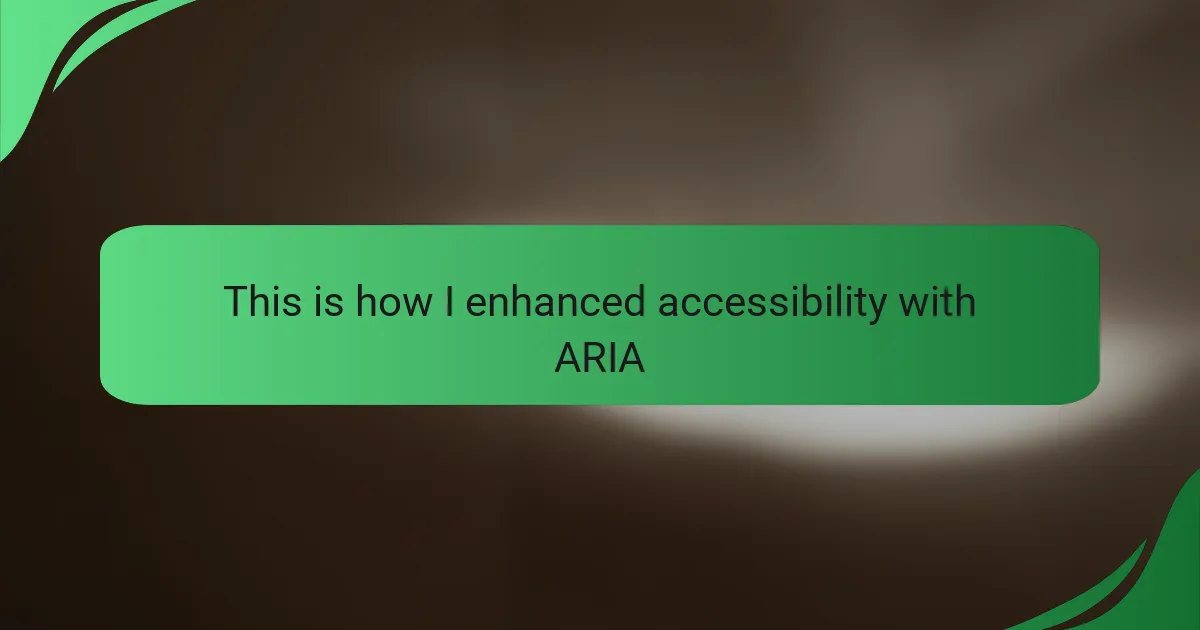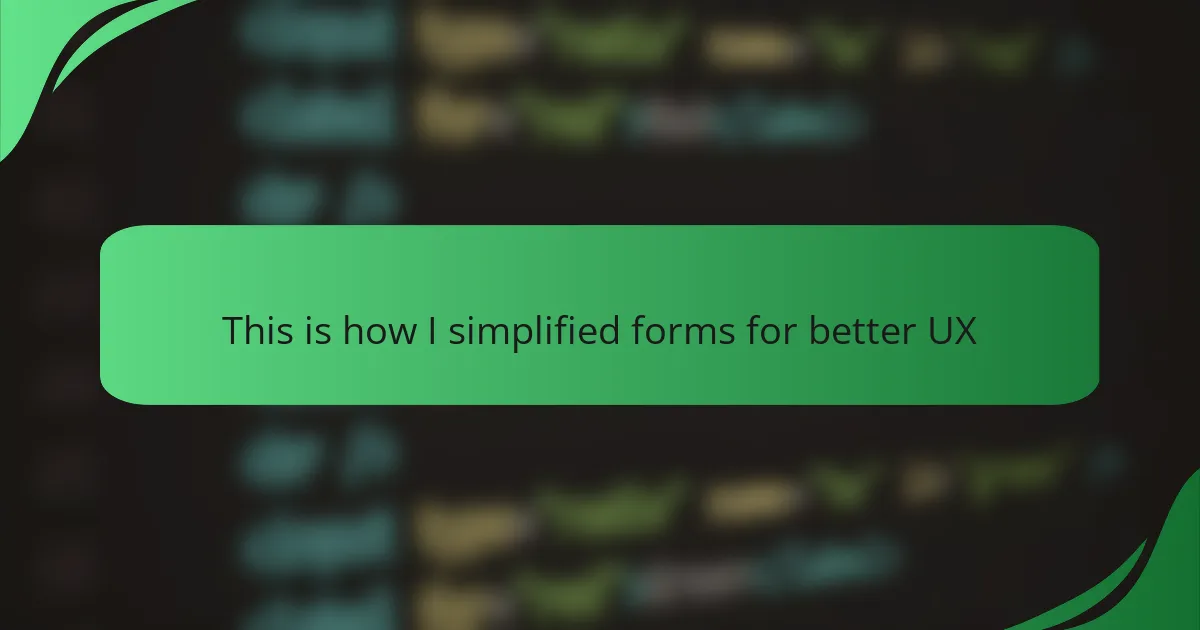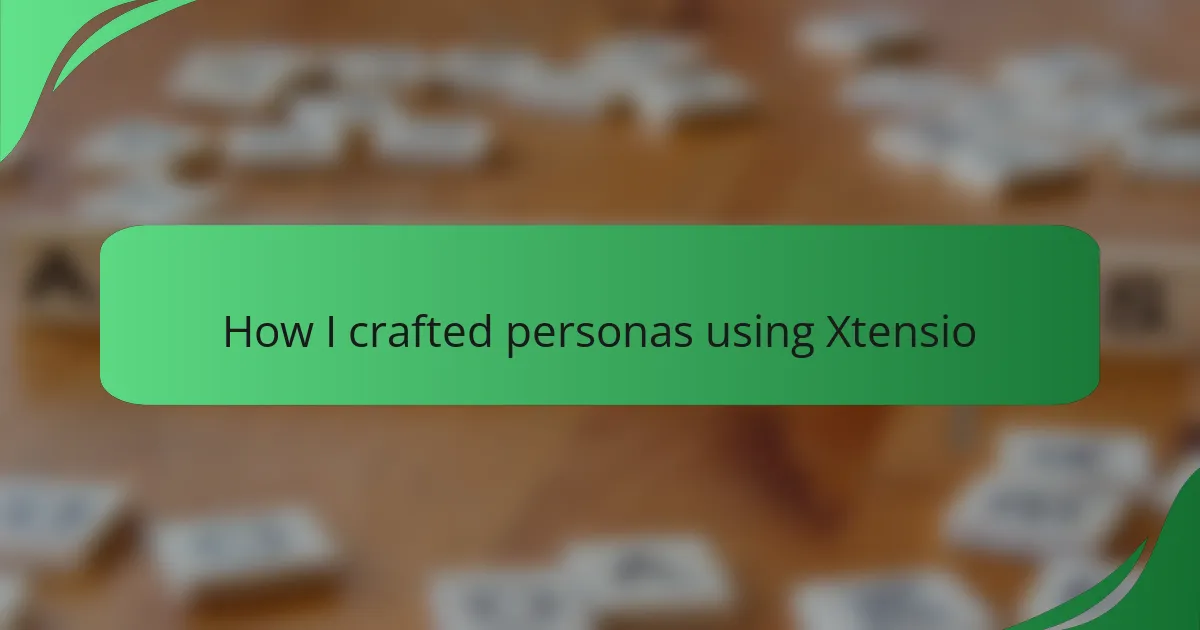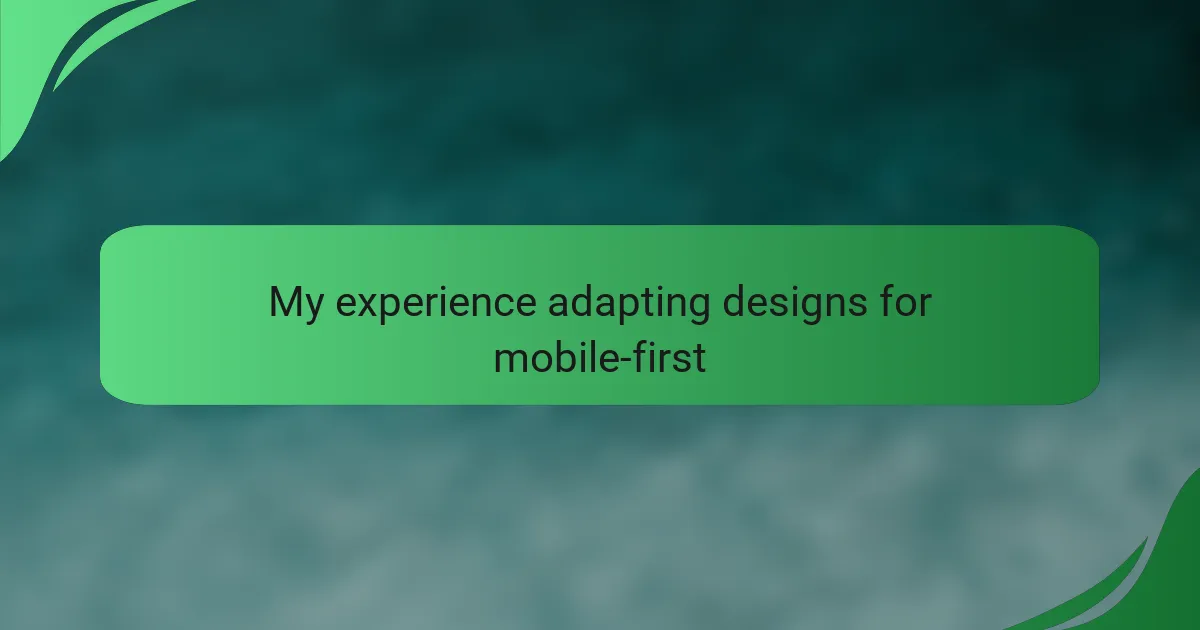Key takeaways
- Interface interaction design focuses on creating a seamless user experience, emphasizing the significance of understanding users’ journeys and emotions.
- Accessibility is essential in design, fostering inclusivity and innovation, and improving the experience for users with disabilities through thoughtful features like ARIA.
- ARIA enhances web accessibility by providing specific roles and properties that improve interaction for assistive technologies, bridging gaps often left by standard HTML.
- Implementing ARIA attributes, such as
aria-labelandrole, can significantly enhance the usability of dynamic content for users with disabilities.
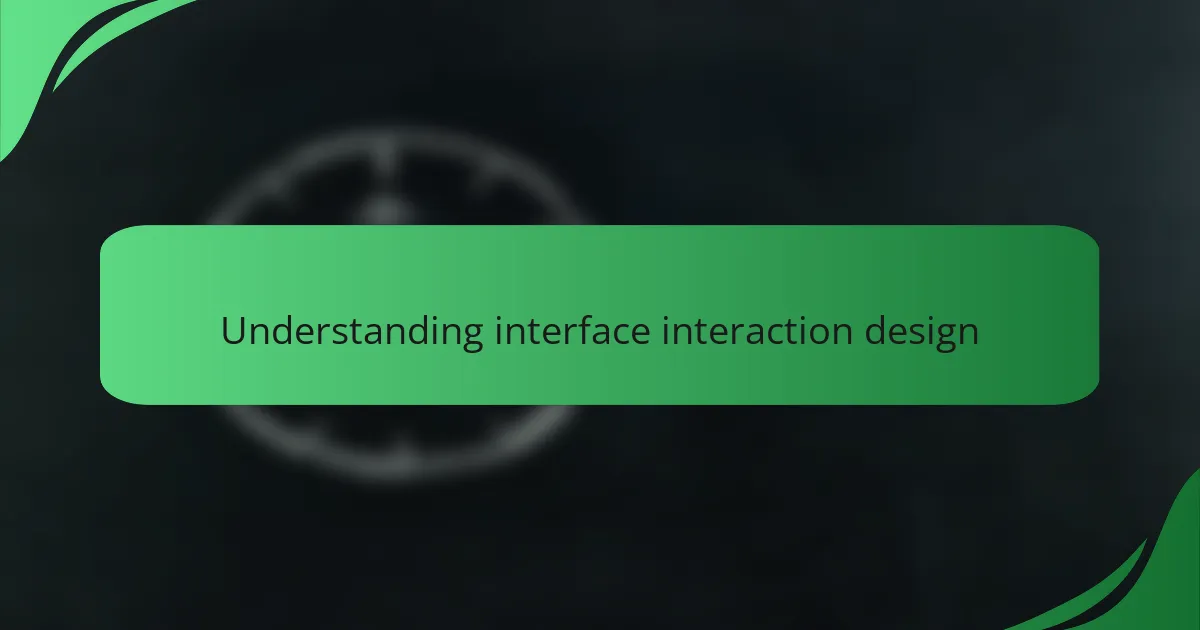
Understanding interface interaction design
Interface interaction design revolves around the way users engage with digital platforms. I remember my first encounter with a poorly designed interface; it left me frustrated and confused. I often wonder, how can design evoke such strong emotions, both positive and negative?
At its core, interaction design aims to create a seamless experience that caters to users’ needs. Think about your daily interactions with apps and websites—how intuitive are they for you? When I started focusing on user experience, I realized how essential it is to understand the user’s journey, emotions, and expectations.
Accessibility is a crucial component within interface design, ensuring everyone can use the platform effectively. When I implemented ARIA (Accessible Rich Internet Applications), I witnessed firsthand how it transformed user engagement for individuals with disabilities. This made me appreciate the importance of an inclusive design approach even more.
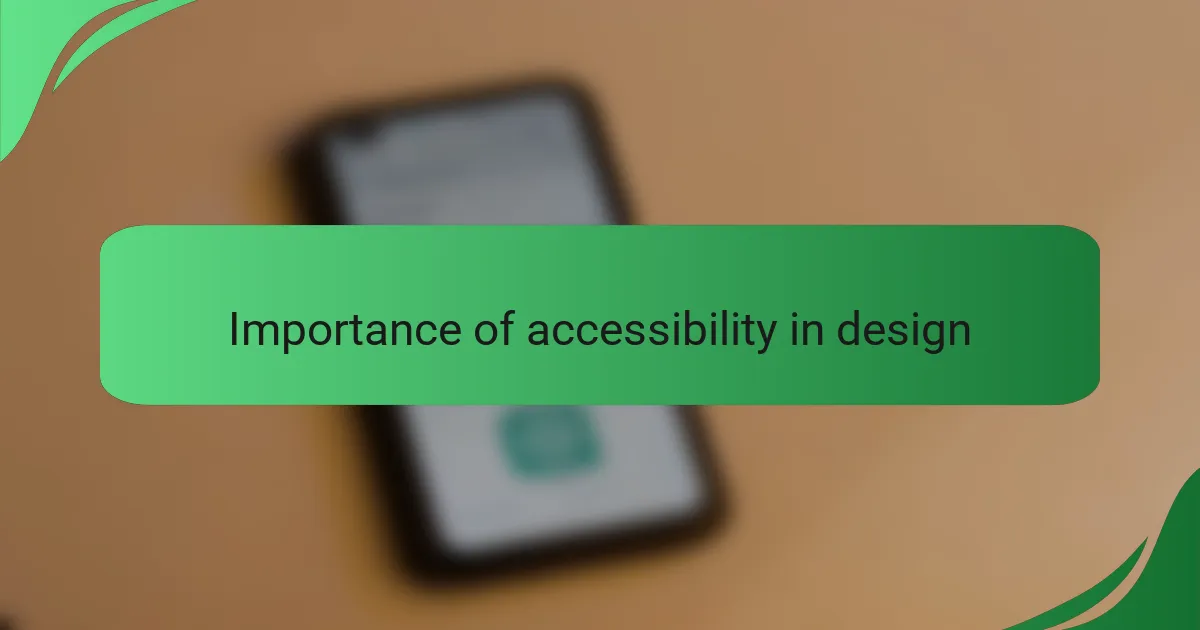
Importance of accessibility in design
Accessibility in design is not just a buzzword; it’s a necessity. I recall a project where a visually impaired user struggled with navigation because of poor labeling. Hearing their frustration made me realize that thoughtful design can truly change someone’s experience and empower them.
When I think about the broad spectrum of users, it’s clear that inclusivity fosters creativity and innovation. Designing with accessibility in mind opens up a dialogue with a diverse audience, allowing for deeper insights and improvements. Have you ever thought about how many potential users you might be excluding simply by overlooking accessibility features?
The emotional impact of accessible design often resonates deeply. Once, a client shared how their father, who had lost his sight, could finally use their site thanks to ARIA. This moment of connection reminded me that design has the power to enhance quality of life for many, making it imperative to prioritize accessibility in every aspect of our work.
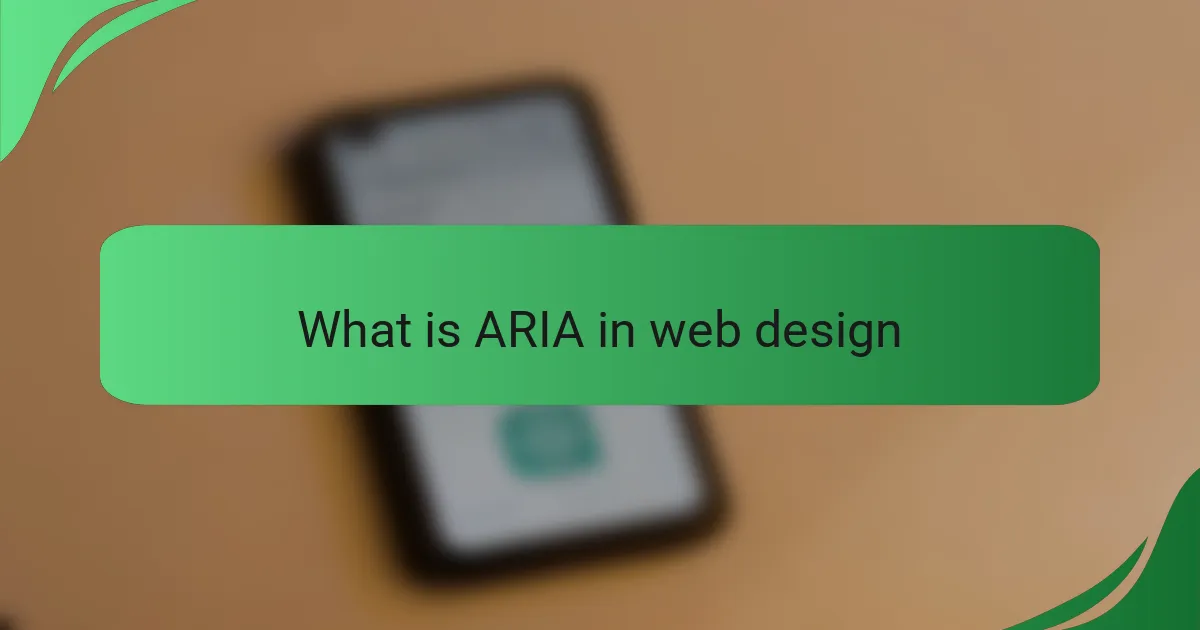
What is ARIA in web design
ARIA, or Accessible Rich Internet Applications, is a set of attributes that help developers make web content more accessible, especially for people with disabilities. In my experience, integrating ARIA into web design has significantly improved the usability of interactive elements, bridging the gap between standard HTML and user accessibility needs. For instance, when I added ARIA roles and states to a complex navigation menu, users with screen readers were able to navigate seamlessly, which was incredibly rewarding to see.
I remember working on a project where we revamped a web application’s accessibility standards. After implementing ARIA roles, feedback from users was overwhelmingly positive—they felt empowered and included. That positive impact reminded me why accessibility should be a priority in our design practices.
| ARIA Features | Standard HTML Features |
|---|---|
| Enhanced accessibility for interactive elements | Limited support for advanced interactions |
| Supports screen readers and assistive technologies | Primarily designed for visual user interfaces |
| Provides states and properties for dynamic updates | Does not dynamically convey changes |
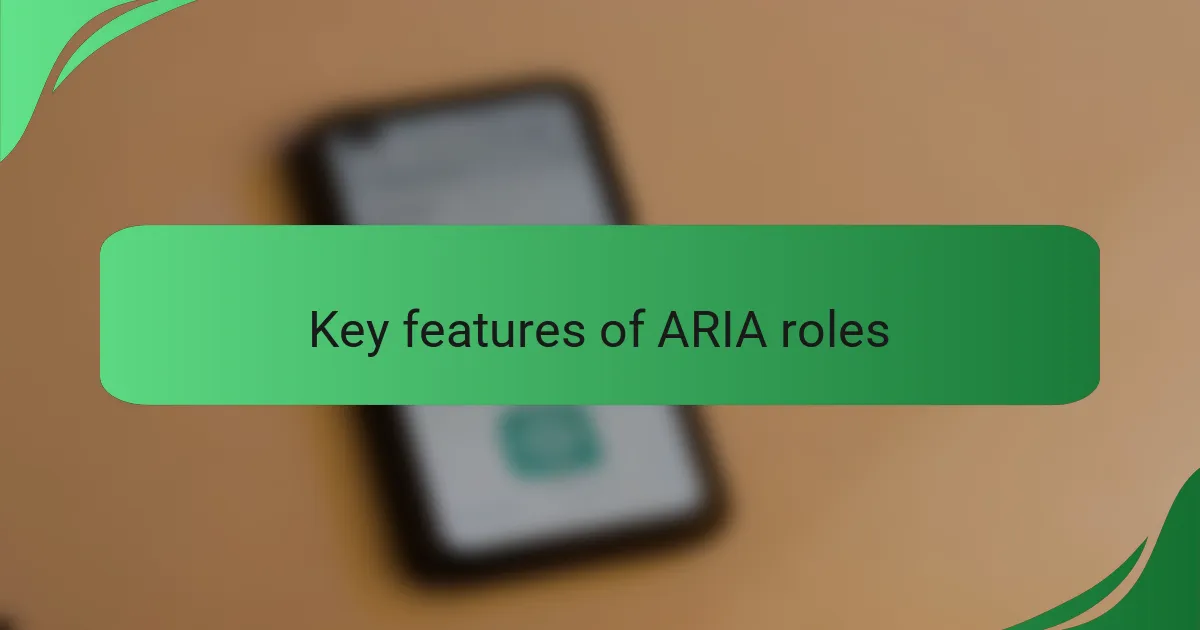
Key features of ARIA roles
Understanding ARIA roles is foundational for enhancing web accessibility. By defining specific roles for elements, ARIA allows developers to communicate the purpose of an element to assistive technologies. I recall when I first implemented ARIA roles in a project and noticed how much easier it became for users with disabilities to interact with content—they felt seen and acknowledged, which is incredibly rewarding.
One of the standout features of ARIA is its ability to convey information dynamically. This means that when a state changes—like a dropdown menu opening or a tab switching—users with screen readers receive immediate updates about those changes. I once worked with a client who was amazed by how their site’s usability improved; they shared experiences of users who previously felt lost but could now navigate smoothly thanks to these enhancements.
Furthermore, ARIA roles are specifically designed to support elements that aren’t natively accessible in HTML. This fills critical gaps where standard HTML falls short. Have you ever struggled with a custom widget that left you confused? I certainly have, and realizing the impact of using ARIA roles in those situations made me appreciate how vital they are for ensuring everyone benefits from an interactive interface.
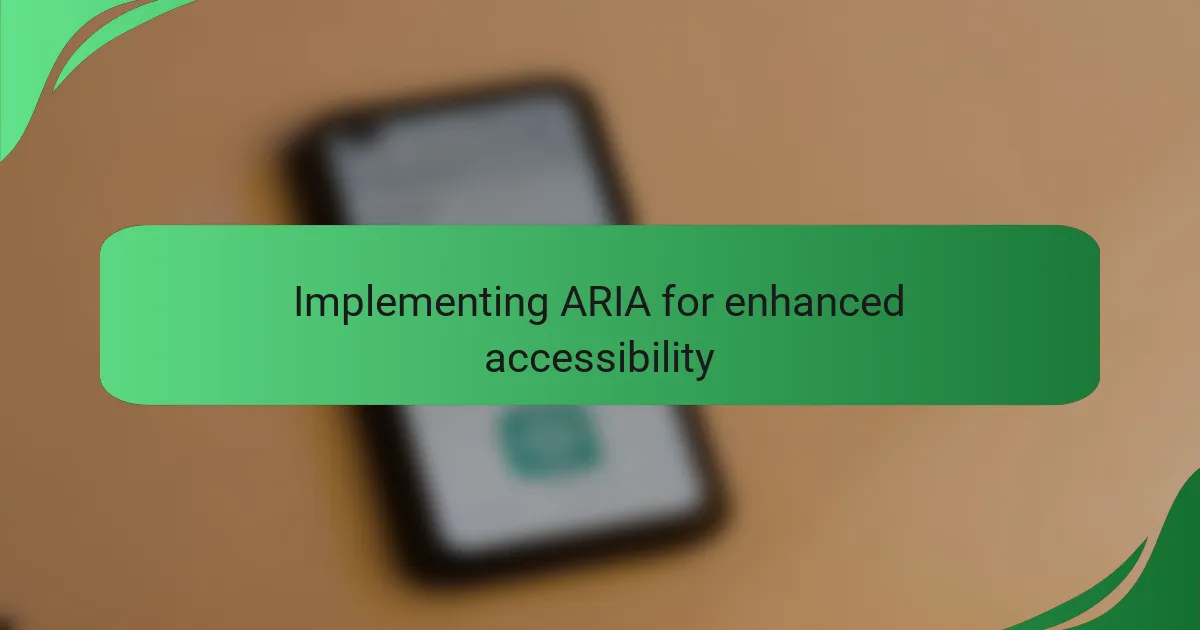
Implementing ARIA for enhanced accessibility
When I started focusing on accessibility, the inclusion of ARIA (Accessible Rich Internet Applications) was a game changer. Implementing ARIA attributes allowed me to make dynamic content more understandable for screen reader users, which I found incredibly rewarding. I remember the first time I saw a colleague with a visual impairment navigate my enhanced website easily—it was a moment that reaffirmed the importance of thoughtful interface design.
Understanding how to use ARIA can be overwhelming at first, but breaking it down into simple practices, like labeling elements clearly with aria-label or using role attributes, can significantly enhance the user experience. Each step I took felt impactful, as I knew I was making the web a more inclusive place for everyone.
Here’s a comparison table that shows some key ARIA roles and properties alongside standard HTML elements for clarity:
| ARIA | HTML Element |
|---|---|
| role=”button” | <button> |
| aria-expanded=”true/false” | <details> |
| role=”alert” | <div> |
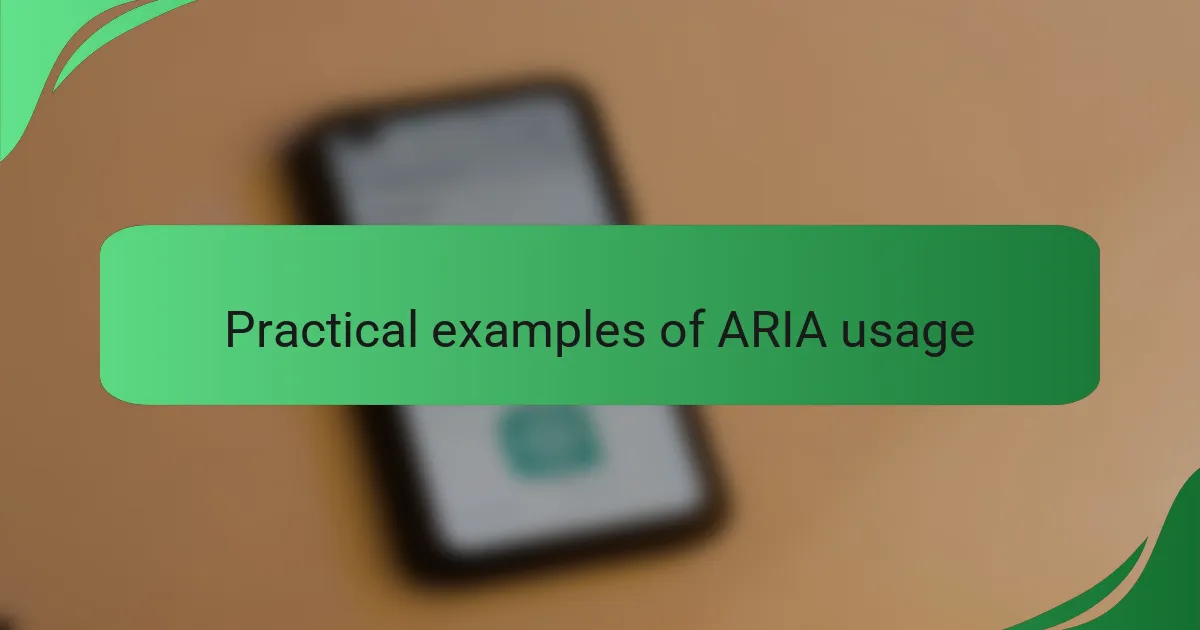
Practical examples of ARIA usage
When I first began integrating ARIA (Accessible Rich Internet Applications) into my projects, I realized how impactful even small changes could be for users with disabilities. For instance, I added ARIA roles and attributes to a custom dropdown menu. It not only made navigation clearer for screen reader users but also provided a sense of satisfaction to me, knowing that I was enhancing their browsing experience.
Here are some practical examples of ARIA usage that I’ve found particularly effective:
- Using
role="dialog"for modal windows to inform assistive technologies that a critical interaction is taking place. - Implementing
aria-labelto provide context for icons or buttons that may not have accompanying text, ensuring clarity. - Utilizing
aria-expandedon expandable sections to indicate whether the content is currently shown or hidden, improving navigation. - Employing
role="navigation"to delineate navigation sections, helping users identify areas in complex layouts. - Adding
aria-liveregions for dynamic content updates, so screen readers announce changes in real-time, enhancing live experiences.
These enhancements have not only enriched user interaction but have also fostered a deeper connection with my audience, reinforcing the importance of accessibility in design.
